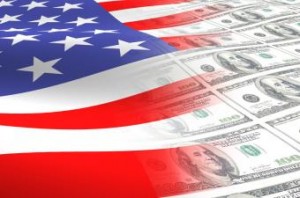 Mortgage insurance programs are one way the federal government subsidizes homeownership to low- and moderate-income buyers. But just how much risk is involved with these loans?
Mortgage insurance programs are one way the federal government subsidizes homeownership to low- and moderate-income buyers. But just how much risk is involved with these loans?
According to a report from authors W. Scott Frame, Kristophoer Gerardi, and Joseph Tracy on the New York Fed's website on Monday, there is quite a bit of risk involved.
Government agencies such as the Federal Housing Administration (FHA), Department of Veterans Affairs (VA), and the USDA's Rural Housing Service (RHS) have programs that facilitate home financing opportunities for low- and moderate-income buyers in order to fulfill the goal of homeownership, which is a U.S. public policy goal.
Nearly all of these loans are securitized by Ginnie Mae, a government agency that guarantees the timely payment of the loans to investors who buy the securities; by virtue of the loans being guaranteed by Ginnie Mae, a government agency, taxpayers assume the credit risk.
A common thread among these loans is that the borrower profiles are “generally quite risky,” according to the authors, because they are all generally characterized by significant leverage and borrowers with poor credit histories and/or low credit scores. For example, the FHA insures loans with a loan-to-value ratio of up to 96.5 percent, which is further raised by an upfront mortgage insurance premium that typically is rolled into the loan balance.
“The lack of upfront equity implies that FHA mortgage borrowers are at greater risk of default than conventional mortgage borrowers,” the authors wrote. “Highly leveraged borrowers might also be expected to behave like “renters with debt,” as opposed to “owners with equity,” and hence not generate the perceived social benefits of homeownership early in the life of the mortgage.”
The loans are also more likely to default because the borrowers have poor credit histories; these borrowers are more likely to face adverse income shocks they cannot absorb.
Government mortgage insurance programs held a small market share, about 3 percent, before the bubble from 2000 to 2005. Immediately after the crisis, these programs began taking the place of subprime loans, and the market share for government insurance mortgage programs rose to a peak of 35 percent in 2009. For the past four years, the share has held steady at about 20 percent, according to the authors.
While many see the rise of government mortgage insurance programs and the extinction of subprime loans as a positive development, the authors point out that the combination of high leverage and low credit scores has translated to extremely high default rates on these government-insured mortgages. The authors cited that GSE-backed loans with vintages of 2002 and 2009 had five-year cumulative default rates (CDRs) of about 2 percent, while Ginnie Mae-backed loans with the same vintages had five-year CDRs of, respectively, 10 percent and 13 percent.
The high default rates on FHA-insured loans eventually resulted in the FHA's Mutual Mortgage Insurance Fund needing government assistance in 2013 in order to continue operating.
“Very high default rates are costly to the government programs and the affected households.,” the authors wrote. “Furthermore, research conducted since the mortgage foreclosure crisis began in 2007, suggests that there are significant negative effects on neighborhoods and communities from high rates of concentrated defaults and foreclosures. A policy intended to increase the homeownership rate will only be effective if it both makes homeownership more affordable and more sustainable.”
One way to make these loans more sustainable would be for the FHA to impose a cap on the borrower's expected CDR (which reflects credit score, LTV, and economic outlook) at the time the loan is originated, and the
“An acceptable cap on the expected CDR should balance the benefits of increased access to homeownership against the personal and social costs of foreclosure when the homeownership ends in default,” the authors wrote. “Affordability has the biggest impact if the household’s ownership experience is a success.”
Click here to view the complete report.

 theMReport.com Your trusted source for mortgage banking news
theMReport.com Your trusted source for mortgage banking news









